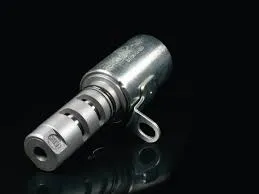Desemba . 22, 2024 20:57 Back to list
cylinder hydraulic parts product
Understanding Cylinder Hydraulic Parts A Comprehensive Overview
Cylinder hydraulic parts are critical components in various industrial applications, serving as the backbone of hydraulic systems. These systems are widely used in construction machinery, manufacturing equipment, automotive applications, and many other sectors that require the efficient transmission of force and motion. Understanding the components and functionality of cylinder hydraulic parts can provide valuable insights into their applications and advantages.
What are Cylinder Hydraulic Parts?
Hydraulic cylinders are often regarded as the heart of hydraulic systems. They convert hydraulic energy into mechanical energy, allowing for the movement of loads in a linear manner. A typical hydraulic cylinder consists of several key parts the cylinder barrel, piston, piston rod, seals, and end caps. Each of these components plays a crucial role in the overall functioning of the hydraulic system.
1. Cylinder Barrel This is the main body of the hydraulic cylinder where the hydraulic fluid operates. It provides the necessary structure and support for the internal components. The barrel is usually made of high-strength steel to withstand the high pressures generated during operation.
2. Piston The piston divides the cylinder into two chambers and is responsible for transferring hydraulic energy to mechanical energy. When hydraulic fluid enters one chamber, it pushes the piston, causing the attached piston rod to move.
3. Piston Rod This is the external part of the cylinder that extends and retracts to perform work. Piston rods are typically chrome-plated to reduce friction and wear, ensuring smooth operation and longevity.
4. Seals Seals are essential for preventing hydraulic fluid from leaking out of the cylinder. They ensure that the pressure is maintained within the system and protect the internal components from contamination.
5. End Caps These are located at both end of the hydraulic cylinder, sealing the cylinder and providing mounting points for attaching the hydraulic cylinder to other machinery.
How Do Hydraulic Cylinders Work?
The operation of hydraulic cylinders is based on Pascal's principle, which states that pressure applied to a confined fluid is transmitted undiminished throughout the fluid. When hydraulic fluid is pumped into the cylinder, it creates pressure that pushes the piston. The movement of the piston is directly translated into linear motion of the piston rod, allowing it to perform work.
cylinder hydraulic parts product

This principle allows hydraulic systems to exert significant force with relatively low energy input
. For example, a small hydraulic cylinder can lift heavy loads, providing a mechanical advantage that is invaluable in many industrial applications.Applications of Cylinder Hydraulic Parts
Hydraulic cylinders are employed in various fields, including construction, agriculture, manufacturing, and automotive industries. Some typical applications include
- Construction Equipment Excavators, bulldozers, and cranes rely heavily on hydraulic cylinders to perform tasks such as lifting, digging, and transporting materials.
- Manufacturing Machinery Hydraulic presses and conveyors use cylinders to manipulate materials and products efficiently.
- Automotive Systems In vehicles, hydraulic cylinders are used in systems like brakes and steering, enabling smooth and responsive operation.
- Aerospace and Aviation Hydraulic systems in aircraft control various functions, including landing gear operation and wing adjustments.
Advantages of Hydraulic Systems
Hydraulic cylinders offer numerous advantages over other types of power transmission systems. They provide high force capabilities in a compact size, exceptional control of motion, and the ability to easily change the direction of movement. Furthermore, hydraulic systems can operate in harsh environments, making them suitable for diverse applications.
Conclusion
Cylinder hydraulic parts are essential to modern machinery and play a crucial role in many industries. Understanding their components and functions helps us appreciate their significance in enhancing operational efficiency and productivity. As technology advances, hydraulic systems continue to evolve, incorporating innovations that further optimize their performance and usability. Whether in heavy machinery or precision equipment, hydraulic cylinders remain a vital element in the world of industrial operations.
-
High-Performance Set of 50/60-45-290 471 | Durable & Reliable Components
NewsAug.26,2025
-
Efficient Pallet Truck Power Units - Reliable Hydraulic Systems
NewsAug.25,2025
-
Premium Set of 50/60-45-290 471 Parts | High Performance
NewsAug.24,2025
-
Efficient & Reliable Double Acting Power Unit | Hydraulic Solutions
NewsAug.23,2025
-
1.5 Ton Turbocharged Cylinder 80/95-40/60-35-124 | High Performance
NewsAug.22,2025
-
High-Performance Fork Lift Hydraulic Power Units
NewsAug.21,2025
